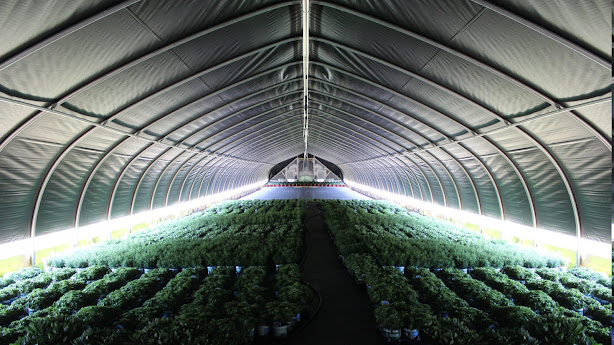Choosing which potting mix to use can be a complicated task. With so many companies and mixes available on the market, how do you make a decision? Start your search with Lambert Peat Moss. Lambert combines different components, including EcoPeat wood fiber, into application-specific blends to eliminate guess work.
Components
Potting
mixes come as a blend of several different components. Making up the majority of
mixes are often sphagnum peat moss, wood fiber, coconut coir, vermiculite, and
perlite, providing structure and physical bulk. Lambert’s peat-based mixes add
two different forms of limestone to counteract the acidity of the base media.
Starter charges of fertilizer are included and may be either conventional or
organic. Finally, all potting mixes include a wetting agent to ensure uniform
moisture distribution with irrigation. Different balances of these components
will make a critical different in application. For example, LM-1 and LM-2 are
two germination mixes from Lambert. However, LM-1 contains perlite while LM-2
does not, leading to different water retention and drainage.
Particle Size
Every
potting mix should provide information on particle sizes. Potting mix producers
such as Lambert provide detailed explanations of each class of particle size in
terms of millimeters and best applications. Seeing words such as “super fine”
and “fine” often indicate a germination mix or young plant mix, like you would
see in Lambert’s LM-19. “Coarse” blends are often meant for larger pots or
general-purpose production, such as Lambert’s LM-111.
Drainage and Water Retention
The
differences between water retention and drainage are subtle but important. Mixes
with smaller particle sizes or heavier on coco coir have better water retention,
which refers to individual particle’s ability to hold on to water. Mixes with
coarse particle sizes will have better drainage, which describes the ability of
water to pass through the media. Lambert’s germination mixes, such as LM-18, would
have very high water retention with low drainage, while a high porosity mix such
as EPM-50 would have high drainage and low water retention.
Putting all this information together, each Lambert mix offers a summary of media qualities, components, and target crops. Reach out to your Griffin rep or GGSPro today to find out more!
|
Item
Number |
Product
name |
Size |
|
149-0021 |
LM-19 |
3.0
cf loose |
|
149-0023 |
LM-19 |
3.8
cf bale |
|
149-0013 |
LM-2 |
3.8
cf bale |
|
149-0046 |
EPM-20 |
3.0
cf loose |
|
149-0048 |
EPM-20 |
3.8
cf bale |
|
149-0064 |
EPM-40 |
3.0
cf loose |
|
149-0069 |
EPM-50 |
3.0
cf loose |











